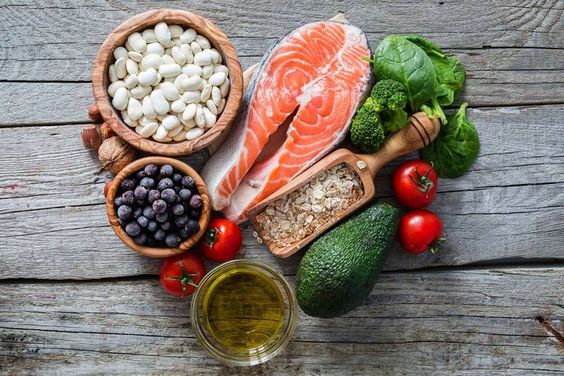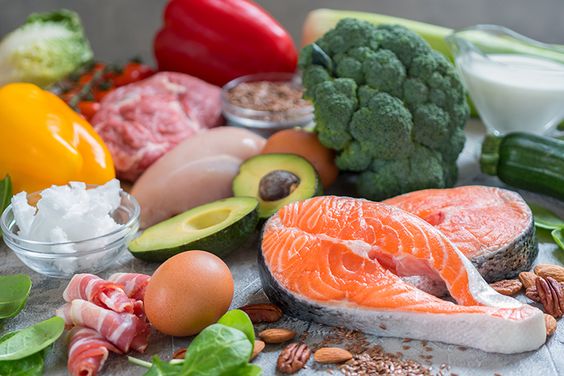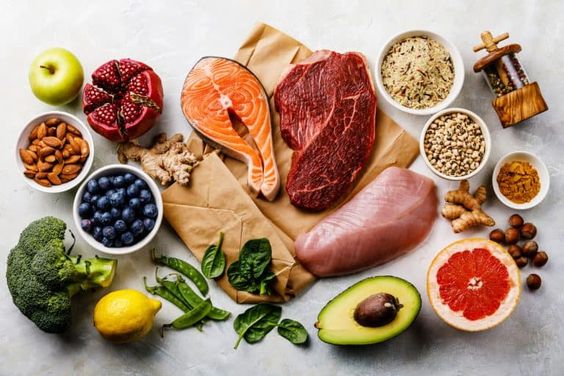The keto diet is a popular choice for those looking to lose weight and improve their health. By following a low-carb, high-fat plan, you can shift your body’s metabolism into a state called ketosis, where it burns fat for energy instead of carbohydrates. This diet primarily focuses on foods like meat, fish, eggs, healthy fats, and low-carb vegetables, making it essential to understand what to eat and avoid.
Before you jump into the keto lifestyle, it’s important to know the potential health benefits and risks involved. Many people experience significant weight loss and improved blood sugar levels, but there can be challenges, especially when starting out. You may need to adjust your eating habits and plan your meals carefully to maximize your success on the diet.
As you prepare to embrace the keto diet, consider how it fits into your life and personal goals. With basic knowledge of the diet’s structure and its benefits, you can make informed choices that support your well-being and align with your dietary preferences.
Key Takeaways
- The keto diet shifts your metabolism to burn fat for fuel.
- It can aid in weight loss and improve certain health markers.
- Proper planning is crucial for successfully adopting a keto lifestyle.
Understanding the Keto Diet Basics
The ketogenic diet focuses on shifting your body’s energy source from carbohydrates to fats. This diet emphasizes the importance of macronutrients and provides different options to fit various lifestyles.
What Is a Ketogenic Diet
A ketogenic diet is a low-carb, high-fat diet. The main goal is to enter a state called ketosis. In ketosis, your body burns fat for fuel instead of glucose. This occurs when you significantly reduce your carbohydrate intake, typically to about 10-15 grams a day.
When you cut carbs, your liver converts fats into ketones. These ketones can then be used for energy. This shift can lead to weight loss and improved metabolic health. However, transitioning to this diet may take a few days and can come with some initial side effects.
The Role of Macronutrients
In a ketogenic diet, macronutrients are divided as follows:
- Fats: Comprise about 70-80% of your diet. Focus on healthy fats like avocados, nuts, and olive oil.
- Proteins: Account for 20-25% of your intake. Select moderate amounts of protein sources like eggs and meat.
- Carbohydrates: Limited to around 5-10%. Prioritize low-carb vegetables like greens and avoid sugars.
Managing these macronutrient ratios is essential to achieve and maintain ketosis. Tracking your food closely can help your body adapt to using fat as the primary fuel source.
Types of Ketogenic Diets
There are several versions of the ketogenic diet you can choose from:
- Standard Ketogenic Diet (SKD): This is the most common form. It follows the typical macronutrient breakdown of low carbs, high fats, and moderate protein.
- Targeted Ketogenic Diet (TKD): This allows you to eat extra carbs around workouts. It’s useful if you have a high level of physical activity.
- Cyclical Ketogenic Diet (CKD): This involves periods of higher-carb intake followed by a strict low-carb phase. It might help athletes or those needing more carbs for performance.
- High-Protein Ketogenic Diet: Similar to the standard version, but with a higher protein intake, typically around 30% of your diet.
Choosing the right type can depend on your personal goals and activity level. Each type offers unique benefits to support your journey into ketosis.
Health Benefits and Potential Risks
The keto diet offers various health benefits, particularly regarding weight management and metabolic improvements. However, it is essential to consider the potential risks that may arise from this eating plan.
Keto for Weight Loss and Metabolic Health
You may notice that many people choose the keto diet for weight loss. This plan changes how your body uses energy by shifting from carbs to fats. As your body enters ketosis, you might experience appetite suppression, helping you eat fewer calories.
This shift can lead to significant weight loss, especially in the first few weeks. Additionally, some studies suggest improvements in metabolic markers, such as insulin levels and blood sugar control. This is particularly beneficial for those managing type 2 diabetes.
Managing Health Conditions with Keto
The keto diet has been shown to help manage certain health conditions. For instance, it can be an effective treatment for epilepsy, particularly in children who do not respond well to medications.
Moreover, some individuals with heart disease may see improvements in risk factors. The diet can lower triglyceride levels and increase HDL (good cholesterol) levels. Some people even report enhanced mental clarity. This can be due to stable blood sugar levels and the brain’s efficiency in using ketones as fuel.
Understanding the Risks and Side Effects
While there are benefits, the keto diet carries potential risks and side effects. You might experience the “keto flu,” which can include fatigue, headaches, and irritability during the initial transition.
Nutrient deficiencies can also arise from eliminating certain food groups. You may need to ensure you get enough vitamins and minerals by focusing on nutrient-dense foods. Constipation is a common issue due to reduced fiber intake from limiting carbs.
Lastly, concerns about high cholesterol and saturated fat intake exist. Regular monitoring of cholesterol levels is advisable if you follow this diet. It is crucial to discuss any drastic dietary changes with a healthcare provider to ensure they fit your health needs.


Planning Your Keto Diet
Planning your Keto diet involves understanding how to create meals that fit your needs. You will focus on selecting the right foods, balancing your meals, and avoiding common mistakes that people often make when starting this diet.
Creating Balanced Keto Meals
To make balanced Keto meals, focus on three key components: healthy fats, moderate protein, and low-carb vegetables.
- Healthy Fats: Include foods like avocados, olive oil, and nuts. Aim for about 55-60% of your daily intake to come from fat.
- Protein: Choose moderate amounts of meats, fish, and eggs. Keep your protein intake around 20-25%.
- Non-Starchy Veggies: Fill your plate with leafy greens such as spinach, kale, and broccoli. These should make up about 10-15% of your diet.
Use tools like meal planning apps or charts to help organize your meals throughout the week. This can keep you on track and ensure you meet your Keto targets.
Keto-Friendly Foods and Alternatives
When following a Keto diet, you should prioritize Keto-friendly foods. Key options include:
- Meats: Beef, pork, chicken, and turkey.
- Fish: Salmon, trout, and sardines.
- Dairy: Full-fat cheese, heavy cream, and yogurt.
- Healthy Oils: Olive oil, coconut oil, and avocado oil.
For snacks, consider alternatives like nuts, seeds, and low-carb protein bars. Avoid foods high in carbs, such as:
- Grains: Bread, pasta, and rice.
- Sugary Foods: Sodas, candies, and desserts.
- Starchy Vegetables: Potatoes, corn, and peas.
These choices will help you maintain a state of ketosis.
Avoiding Common Keto Diet Pitfalls
Starting a Keto diet can come with some challenges. Being aware of common pitfalls can help you succeed.
- Not Planning Meals: It’s easy to fall off track without a meal plan. Organize your week with a Keto meal plan to avoid last-minute choices that may derail your progress.
- Ignoring Macronutrient Ratios: Stick to the recommended fat, protein, and carb ratios. This balance is crucial for reaching ketosis and maintaining satiety.
- Neglecting Hydration: Drink plenty of water, especially at the start. Dehydration can occur as your body adjusts, leading to fatigue or headaches.
By avoiding these common mistakes, you can enjoy the benefits of your Keto journey.
Keto Diet and Lifestyle Adjustments
Adjusting your lifestyle is an important part of starting the keto diet. You may need to consider aspects like incorporating fasting, staying active, and ensuring you can maintain this diet long-term.
Incorporating Fasting into Keto
Intermittent fasting can complement the keto diet well. This method involves cycling between periods of eating and fasting.
- How it works: You might choose a pattern like 16/8, where you eat for eight hours and fast for 16. This helps encourage ketosis, as your body uses fat for energy during the fasting state.
- Electrolyte balance: When fasting, remember to stay hydrated. Electrolytes such as sodium, potassium, and magnesium are crucial. Low-carb diets can lower these minerals, so consider supplements if needed.
Adapting to a fasting schedule can take time. Listen to your body, and adjust based on how you feel.
Exercise and Physical Activity on Keto
Staying active is vital for your health while on the keto diet.
- Types of exercise: Focus on a mix of cardio and strength training. Activities like walking, swimming, and weightlifting can boost your energy levels.
- Energy levels: Initially, you may feel fatigued as your body adjusts to burning fat for fuel. This is common and often referred to as the “keto flu.”
- Hydration is key: Drink plenty of water and consider electrolyte drinks to keep your levels balanced while exercising. This will help you maintain stamina.
Regular physical activity not only supports weight loss but also improves overall well-being on keto.
Long-Term Sustainability of Keto
Thinking about how to sustain the keto lifestyle in the long run is important.
- Meal planning: Create a weekly meal plan to stay organized. Focus on whole foods like meats, fish, eggs, and low-carb vegetables.
- Social situations: Be prepared for social events. Bring your own keto-friendly snacks or suggest restaurants with low-carb options to avoid temptations.
Maintaining flexibility in your diet can help. It’s okay to tweak your meals while keeping your focus on low-carb and high-fat foods. This will make the keto lifestyle easier to stick with long-term.


Special Considerations and Personalization
When starting the keto diet, it’s important to tailor your approach based on your health status and personal goals. Individual needs can vary greatly, especially when considering specific health conditions and dietary preferences. Understanding these differences helps you make the most of your keto experience.
Keto for Different Health Conditions
The keto diet can benefit various health conditions. For Type 2 diabetes, lowering carbohydrates helps manage blood sugar levels. Research shows that many individuals experience improved insulin sensitivity and reduced reliance on medications. If you have obesity, keto can promote weight loss by shifting the body into fat-burning mode.
If you’re dealing with polycystic ovary syndrome (PCOS), keto might also help in managing symptoms by regulating hormones and improving metabolism. For those with cancer, some studies suggest that a ketogenic approach can support traditional therapies by restricting glucose, which some tumors use for growth. Always consult with a healthcare professional before making significant dietary changes related to health conditions.
Customizing Keto to Individual Needs
Your nutritional needs play a crucial role in how you should approach the keto diet. This involves adjusting the macronutrient ratio of fats, proteins, and carbs. A common starting point is 70% fat, 25% protein, and 5% carbs. However, you might need to make changes based on your personal health goals, activity level, and how your body responds.
In some cases, you may find a high-protein keto style suits you better. This version often includes about 60% fat, 35% protein, and 5% carbs. Keep a food journal to track what foods work best for your body. Regularly evaluate your energy levels, mood, and overall well-being to adjust as needed.
Keto Variations: Targeted and Cyclical Keto
Some people prefer specific variations of the keto diet that can enhance results. Targeted keto allows you to eat extra carbs around workouts. This can provide a quick energy boost and support performance while still keeping your overall intake low.
Cyclical keto involves alternating periods of strict ketogenic eating with higher carb days. This method may help you maintain weight loss and replenish glycogen stores after intense workouts. Both methods can be effective, but monitoring how your body reacts is crucial. Adjust accordingly to find what maintains your energy and supports recovery while staying aligned with your personal health goals.
Frequently Asked Questions
When starting a keto diet, you may have several questions about what to eat, how it can help with weight loss, and what to expect during the transition. Here are answers to some common questions that can guide you as you begin your journey.
What should I eat on a keto diet to get started?
To start a keto diet, focus on high-fat, low-carb foods. Include options like meat, fish, eggs, nuts, cheese, and healthy oils. Non-starchy vegetables, such as leafy greens and broccoli, are also important. Avoid sugary foods, grains, and high-carb fruits.
Can a keto diet be beneficial for weight loss, and if so, how?
Yes, a keto diet can help with weight loss. By reducing carbs, your body enters ketosis, where it burns fat for energy instead of glucose. This can lead to a decrease in body fat while helping you feel full, making it easier to eat less while still feeling satisfied.
What are the potential side effects of adopting a ketogenic lifestyle?
Some people experience side effects when starting a keto diet. Common issues include fatigue, headaches, and digestive problems. These symptoms, sometimes called the “keto flu,” usually go away after a few days as your body adapts to burning fat instead of carbs.
How can one transition to a keto diet in a safe and sustainable way?
To transition safely, start by gradually reducing your carb intake instead of cutting it all at once. Increase healthy fats slowly and monitor how your body reacts. Staying hydrated and ensuring you get enough electrolytes can also help ease the transition.
What common mistakes should one avoid when beginning a keto diet?
Common mistakes include consuming too many carbs, not eating enough fats, or neglecting vegetables. It’s also important not to skip meals or dramatically cut calories, as this can lead to fatigue and poor dietary choices. Tracking your food intake can help you stay on track.
What changes should I expect in my body during the first few days of keto?
During the first few days on a keto diet, you may feel tired or experience cravings as your body adjusts. You might also notice weight loss due to water loss initially. As you continue, energy levels can improve, and you may start to feel lighter as your body enters ketosis.




